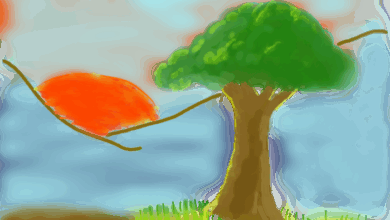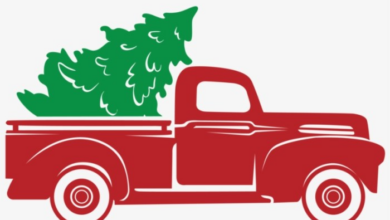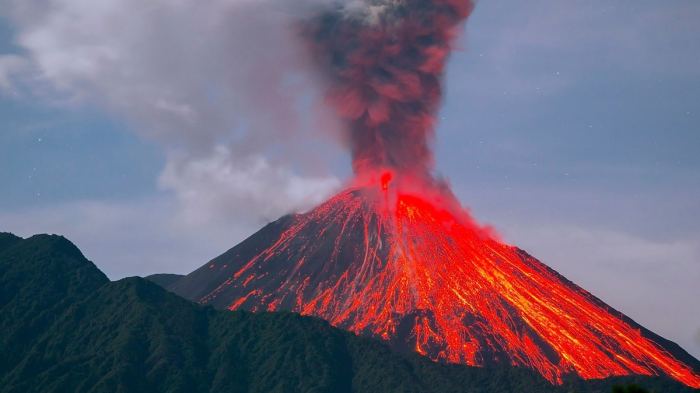
Have You Ever Seen a Volcano Erupt?
Have you ever seen a volcano erupt? It’s a question that conjures up images of fiery molten rock, towering plumes of ash, and the raw power of nature. Witnessing a volcanic eruption is a truly awe-inspiring experience, a glimpse into the earth’s fiery heart.
From the dramatic landscapes they create to the impact they have on our planet, volcanoes are a testament to the constant evolution of our world.
Volcanoes are more than just geological formations; they are a window into the processes that shape our planet. Understanding how volcanoes work and the forces that drive them allows us to appreciate the dynamic nature of the earth and the immense power it holds.
From the gentle slopes of shield volcanoes to the towering peaks of stratovolcanoes, each type of volcano has its unique characteristics and history.
Volcanoes
Volcanoes are awe-inspiring geological formations that serve as reminders of the Earth’s dynamic and ever-changing nature. They are openings in the Earth’s crust through which molten rock, ash, and gases are ejected. While often associated with destruction, volcanoes play a crucial role in shaping our planet’s landscapes and contributing to the formation of fertile soils.
Geological Processes Leading to Volcanic Eruptions
Volcanic eruptions are driven by the movement of tectonic plates, which form the Earth’s outer shell. The Earth’s interior is composed of a hot, molten layer called the mantle. When tectonic plates collide, one plate may slide beneath the other, a process known as subduction.
As the descending plate melts, magma, molten rock, rises towards the surface.
Magma is molten rock found beneath the Earth’s surface, while lava is molten rock that has erupted onto the Earth’s surface.
The pressure of the rising magma can eventually overcome the strength of the surrounding rocks, leading to a volcanic eruption.
Types of Volcanoes
Volcanoes are classified based on their shape, eruption style, and composition.
Types of Volcanoes
- Shield Volcanoes: These volcanoes are characterized by their broad, gently sloping cones, formed by the accumulation of fluid lava flows. They are typically associated with effusive eruptions, where lava flows slowly and steadily. Examples include Mauna Loa in Hawaii and Kilauea in Hawaii.
- Stratovolcanoes (Composite Volcanoes): These volcanoes are known for their steep slopes and layered structures, formed by alternating layers of lava flows and pyroclastic material (ash, rocks, and gas). They are associated with explosive eruptions, characterized by violent bursts of gas and ash.
Examples include Mount Fuji in Japan and Mount Vesuvius in Italy.
- Cinder Cones: These volcanoes are the smallest and most common type. They are formed by the accumulation of tephra, fragmented volcanic material, ejected during explosive eruptions. Cinder cones are typically short-lived and often erode quickly. Examples include Parícutin in Mexico and Sunset Crater in Arizona.
- Calderas: These are large, bowl-shaped depressions formed by the collapse of a volcano’s summit after a massive eruption. Calderas can be several kilometers wide and often contain lakes. Examples include Yellowstone Caldera in Wyoming and Crater Lake in Oregon.
Famous Volcanoes and Their Historical Eruptions
Throughout history, volcanoes have played a significant role in shaping human civilization, both positively and negatively.
Famous Volcanoes
- Mount Vesuvius (Italy): In 79 AD, Mount Vesuvius erupted, burying the Roman cities of Pompeii and Herculaneum in ash and pumice. This eruption is one of the most famous and well-documented volcanic events in history.
- Mount Tambora (Indonesia): The eruption of Mount Tambora in 1815 was the largest volcanic eruption in recorded history. The eruption caused widespread devastation and triggered a global “year without a summer” in 1816, due to the massive amount of volcanic ash released into the atmosphere.
- Krakatoa (Indonesia): The eruption of Krakatoa in 1883 was one of the most violent volcanic eruptions in modern history. The explosion was heard thousands of kilometers away, and the resulting tsunami killed tens of thousands of people.
- Mount St. Helens (USA): The eruption of Mount St. Helens in 1980 was one of the most destructive volcanic events in US history. The eruption caused a massive landslide and a lateral blast that devastated the surrounding area.
Witnessing an Eruption
Witnessing a volcanic eruption is an awe-inspiring and sometimes terrifying experience that engages all the senses. It’s a raw display of nature’s power, a reminder of the forces that shape our planet.
Visual Spectacle
The visual aspects of a volcanic eruption are truly captivating. Molten lava, glowing red-hot, flows down the slopes, creating fiery rivers that can reach temperatures of over 1,000 degrees Celsius. Ash plumes, towering columns of volcanic ash, can rise thousands of meters into the air, casting a dark shadow over the surrounding landscape.
I’ve never seen a volcano erupt in person, but I imagine the sight would be awe-inspiring and terrifying all at once. It’s like a giant, fiery explosion, like the moment a little painted chandelier explodes into a shower of sparks.
The difference, of course, is that a volcano erupts with molten rock and ash, while the chandelier only releases light and heat. But both are a mesmerizing display of power and beauty.
The eruption can also produce glowing rock fragments, called tephra, which are ejected into the air and can travel great distances.
Sonic Symphony
The sounds of a volcanic eruption are equally impressive. The eruption can begin with a low rumble, like the distant sound of thunder, as magma rises through the volcano’s vent. This rumble can intensify into a deafening roar as the eruption reaches its peak.
Explosive booms, like the sound of cannon fire, can shake the ground and reverberate through the air, creating a truly unforgettable sonic experience.
Personal Accounts
Many people have witnessed volcanic eruptions firsthand and their experiences offer a glimpse into the raw power and beauty of these natural phenomena. One individual, who witnessed the eruption of Mount Etna in Italy, described the experience as “a symphony of fire and light.” Another person, who observed the eruption of Kilauea in Hawaii, recalled the feeling of awe and wonder as they watched the lava flow like a river of molten gold.
These accounts highlight the profound impact that volcanic eruptions can have on those who witness them.
The Impact of Volcanic Eruptions
Volcanic eruptions are powerful natural phenomena that can have both destructive and beneficial impacts on the environment and human societies. These events can reshape landscapes, alter ecosystems, and even influence global climate patterns. Understanding the multifaceted impacts of volcanic eruptions is crucial for mitigating risks and harnessing their potential benefits.
The Dangers of Volcanic Eruptions
Volcanic eruptions pose a range of hazards that can be devastating to human life and property. These dangers stem from the release of molten rock, ash, and gases from the Earth’s interior.
Have you ever seen a volcano erupt? The raw power of nature is truly awe-inspiring. It’s a reminder that even the most solid ground can be shaken. It’s kind of like how I felt when I first discovered a recipe for gluten free snow balls – my world was shaken! I never thought I’d be able to enjoy those childhood treats again, but now I can.
Seeing a volcano erupt is an experience that leaves you breathless, and so is the joy of discovering new ways to enjoy old favorites.
- Lava Flows:Molten rock, known as lava, can flow down the slopes of volcanoes at speeds ranging from a few meters per hour to tens of kilometers per hour. Lava flows can destroy buildings, infrastructure, and vegetation in their path. The 1980 eruption of Mount St.
Helens in Washington State, USA, produced a massive lava flow that buried forests and reshaped the surrounding landscape.
- Ashfall:Volcanic ash, composed of fine particles of rock and glass, can be ejected into the atmosphere during eruptions. Ashfall can blanket entire regions, causing respiratory problems, damaging crops and infrastructure, and disrupting air travel. The 2010 eruption of Eyjafjallajökull in Iceland, for example, grounded flights across Europe for several days due to ash clouds.
- Volcanic Gases:Volcanic eruptions release a variety of gases, including sulfur dioxide, carbon dioxide, and hydrogen sulfide. These gases can be harmful to human health and the environment. Sulfur dioxide, in particular, can react with water vapor in the atmosphere to form sulfuric acid, which contributes to acid rain and can damage vegetation.
I’ve always been fascinated by the raw power of nature, and witnessing a volcano erupt would be an incredible experience. The thought of molten rock spewing from the earth, the rumbling sounds, the fiery glow – it’s something I can only imagine.
If you’ve ever seen a volcano erupt, I’d love to hear about it! Join in the conversation and share your stories. Maybe one day, I’ll be lucky enough to witness this awe-inspiring spectacle firsthand.
The 1991 eruption of Mount Pinatubo in the Philippines released a massive amount of sulfur dioxide into the atmosphere, causing a global decrease in temperature for several years.
The Benefits of Volcanic Activity
While volcanic eruptions can be destructive, they also have positive impacts on the environment and human societies.
- Fertile Soil:Volcanic ash and rock weather over time, releasing nutrients that enrich the soil. This makes volcanic regions ideal for agriculture. The rich soils of the Indonesian island of Java, for example, are largely due to volcanic activity.
- Geothermal Energy:The heat from volcanic activity can be harnessed to generate electricity. Geothermal power plants utilize steam or hot water from underground reservoirs to produce clean and sustainable energy. Iceland, which sits on a volcanic hotspot, derives a significant portion of its electricity from geothermal sources.
Volcanic Landscapes and Ecosystems
Volcanic eruptions play a significant role in shaping landscapes and ecosystems.
- Mountain Formation:Volcanic eruptions can build up mountains over time. The Hawaiian Islands, for example, were formed by a series of volcanic eruptions over millions of years.
- Island Arcs:Volcanic eruptions along subduction zones create chains of islands, known as island arcs. The Aleutian Islands in Alaska, USA, are an example of an island arc formed by volcanic activity.
- Unique Ecosystems:Volcanic landscapes often support unique and diverse ecosystems. The volcanic soils and geothermal activity create habitats that are adapted to extreme conditions. For example, the Galapagos Islands, known for their unique wildlife, were formed by volcanic eruptions.
Exploring Volcanoes
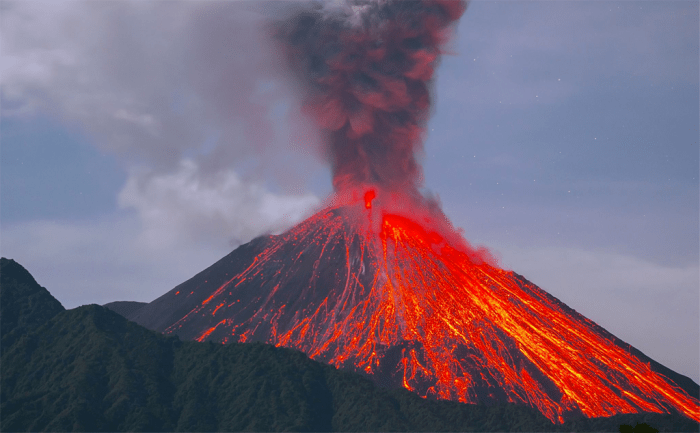
Volcanoes, with their fiery power and awe-inspiring landscapes, offer a unique and captivating experience for adventurers and nature enthusiasts alike. Witnessing the raw power of nature firsthand can be both humbling and exhilarating, providing a deeper understanding of the Earth’s dynamic processes.
Planning a Volcano Expedition
To embark on a volcano expedition, careful planning and preparation are crucial. Here’s a sample itinerary for a thrilling and safe journey: Day 1:Arrive at your chosen destination, acclimatize to the environment, and familiarize yourself with the local safety guidelines.
Day 2:Visit a dormant or extinct volcano for a gentle introduction to volcanic landscapes. Explore the surrounding areas, observe geological formations, and learn about the volcano’s history. Day 3:Hike to an active volcano, following established trails and respecting designated areas. Observe the volcanic activity from a safe distance and capture breathtaking photos.
Day 4:Explore a volcanic crater or caldera, marveling at the immense scale of these geological features. Learn about the processes that shaped these unique formations. Day 5:Visit a volcanic museum or research center to gain a deeper understanding of volcanology, geological processes, and the impact of volcanic eruptions.
Day 6:Enjoy a relaxing day exploring the local culture, cuisine, and surrounding natural beauty. Day 7:Depart from your destination, carrying with you memories of an unforgettable volcanic adventure. Safety Precautions:* Research:Before embarking on your trip, thoroughly research the volcano you plan to visit, its current activity level, and any associated risks.
Local Guidance
Consult with local guides or authorities for up-to-date information on safe access points and trails.
Emergency Preparedness
Carry a first-aid kit, essential supplies, and a communication device.
Weather Conditions
Be aware of weather patterns and potential hazards, such as volcanic ash, gas emissions, and sudden changes in temperature.
Respect Boundaries
Stay within designated areas and respect all safety guidelines. Recommended Locations:* Mount Etna, Italy:Europe’s highest and most active volcano, offering stunning views and a chance to witness eruptions.
Kilauea, Hawaii, USA
Known for its continuous lava flows and dramatic volcanic activity.
Mount Fuji, Japan
A dormant stratovolcano, offering scenic trails and panoramic views.
Mount Vesuvius, Italy
Famous for its catastrophic eruption that buried Pompeii, showcasing the destructive power of volcanoes.
Mount Bromo, Indonesia
A stunning active volcano offering breathtaking sunrise views.
Famous Volcanoes Around the World, Have you ever seen a volcano erupt
Volcanoes have captivated humanity for centuries, leaving their mark on history, culture, and landscapes. Here are some of the most famous volcanoes worldwide:
| Volcano | Location | Type | Notable Eruptions |
|---|---|---|---|
| Mount Vesuvius | Italy | Stratovolcano | 79 AD eruption that buried Pompeii and Herculaneum |
| Mount Etna | Italy | Stratovolcano | Frequent eruptions, most recently in 2021 |
| Kilauea | Hawaii, USA | Shield volcano | Continuous eruptions since 1983 |
| Mount Fuji | Japan | Stratovolcano | Last eruption in 1707-1708 |
| Mount St. Helens | Washington, USA | Stratovolcano | 1980 eruption, one of the most destructive volcanic events in U.S. history |
| Krakatoa | Indonesia | Stratovolcano | 1883 eruption, one of the most violent volcanic eruptions in recorded history |
Resources for Volcano Enthusiasts
To deepen your understanding of volcanoes and their impact, here are some valuable resources:* Books:
“Volcanoes
A Very Short Introduction” by John Stix
“Fire and Stone
The Science of Volcanoes” by Steve Sparks “The Volcano Adventure Guide” by Barry Dawson
Documentaries
“Volcanoes
The Fires of Creation” (National Geographic)
“Inside Volcanoes” (BBC)
“Volcanoes
The Incredible Story of Earth’s Fiery Mountains” (Discovery Channel)
Websites
Smithsonian Institution Global Volcanism Program
[https://volcano.si.edu/](https://volcano.si.edu/)
United States Geological Survey (USGS) Volcano Hazards Program
[https://www.usgs.gov/natural-hazards/volcano-hazards](https://www.usgs.gov/natural-hazards/volcano-hazards)
Volcano Discovery
[https://www.volcanodiscovery.com/](https://www.volcanodiscovery.com/)
Volcanoes in Art and Culture: Have You Ever Seen A Volcano Erupt
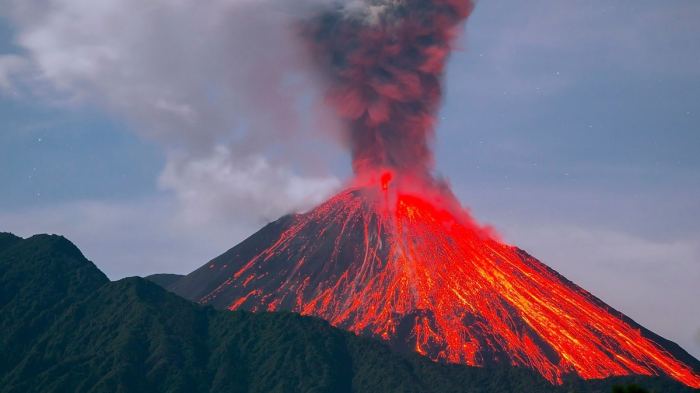
Volcanoes, with their awe-inspiring power and destructive potential, have captivated human imagination for millennia, leaving an indelible mark on art, literature, and mythology. From ancient cave paintings to contemporary cinema, these fiery mountains have served as both sources of inspiration and symbols of both creation and destruction.
Volcanoes in Art
The depiction of volcanoes in art reflects diverse cultural perspectives and interpretations.
- Ancient Cave Paintings:Some of the earliest depictions of volcanoes can be found in cave paintings dating back thousands of years. These paintings, often found near volcanic regions, suggest that early humans were aware of and perhaps even worshipped these natural forces.
For example, the “Cave of the Hands” in Argentina features hand stencils and paintings of animals, including a possible depiction of a volcanic eruption.
- Renaissance and Baroque Art:During the Renaissance and Baroque periods, artists began to incorporate volcanoes into their paintings as symbols of power, chaos, and the sublime. For instance, Pieter Bruegel the Elder’s painting “The Hunters in the Snow” (1565) features a volcano in the background, adding a sense of grandeur and drama to the landscape.
- Romanticism and Impressionism:The Romantic and Impressionist movements saw a renewed interest in nature, with volcanoes often serving as a central theme. Artists like Caspar David Friedrich and Gustave Courbet sought to capture the raw beauty and destructive power of these natural wonders.
Friedrich’s painting “The Wanderer Above the Sea of Fog” (1818) features a solitary figure standing on a mountaintop, with a volcano erupting in the distance, symbolizing the vastness and mystery of nature.
- Modern and Contemporary Art:In modern and contemporary art, volcanoes continue to inspire artists, who explore themes of nature, destruction, and the human relationship with the environment. Artists like Anselm Kiefer and Hiroshi Sugimoto have created works that reflect on the power and beauty of volcanic landscapes.
Kiefer’s mixed media installations often incorporate volcanic ash and other materials, while Sugimoto’s photographs capture the ephemeral beauty of volcanic eruptions.

